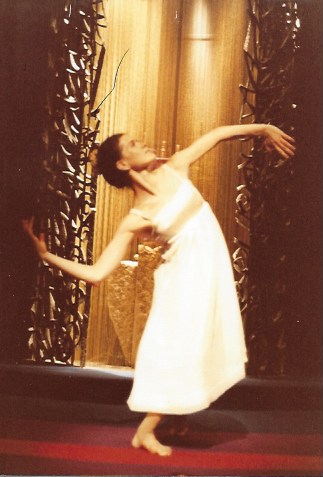As Murray and I have decided to move with just suitcases to our new home in Costa Rica, we have been going through drawers and bookcases and finding new homes for so many things. From 1972 to 2004 I diligently kept Avodah scrapbooks filled with flyers of performances, reviews, photographs of fun times on tour, shots of workshops/performances and professional photographs of different pieces. Suddenly I was faced with what to do with them. As they also are providing an important resource for this blog, I immediately decided that the most important thing to do was to scan each page so I would have the information but could then let go of the actual heavy and bulky scrapbooks.
And so several weeks ago I began scanning each page, sometimes even opening up a program or an article to scan that part which wasn’t visible on the page. One night when I went to bed I noticed that I had a queasy knot in my stomach. I wasn’t sure what that was from.
Kezia had encouraged me to find a place to donate the scrapbooks. I wasn’t sure where. I did drop an email to two people asking for suggestions, but didn’t get a response. Kezia suggested the Performing Arts Library at Lincoln Center, but I didn’t think that was realistic since I wasn’t a mainstream dance figure. And then I thought maybe the Dance Library of Israel, but I didn’t pursue that.
Then, as I was scanning yet another volume it dawned on me that one of the most consistent things in the history of The Avodah Dance Ensemble was that from the company’s beginning, it had been a part of the reform Jewish movement, and in New York our home base was Hebrew Union College – Jewish Institute of Religion. We had collaborated with many professors there, and both rabbinic students and cantorial students had played important roles in the company, so HUC-JIR seemed the most likely place for an archive. Kezia had already suggested that possibility, but the problem was that most of the people I had worked with had retired or were no longer there. But now I went to their website in search of some ideas.
At the website I found the American Jewish Archives which are housed at the Cincinnati campus of HUC-JIR. They have their own website and of course I went there. It mentioned that they have a collection of papers, scrapbooks and music related to reform Judaism and Jews in America. They list their collection on one of the pages in two ways. One is alphabetical and the other is by collection number. This sounded like a match. I jotted down their phone number and first thing the next morning I called. I was put through to a delightful woman, Dr. Dana Herman, who, as soon as I explained the different people at HUC-JIR that Avodah and I had worked with, said they would be thrilled to have the collection.
Much to my surprise, the weird pit in my stomach eased. I hadn’t realized that I was very concerned about where the materials would be housed. As I was scanning the pages I was reminded of the many outstanding scholars, musicians, writers, dancers and fellow choreographers who are a part of Avodah’s and my history. The number of reform congregations in the US where we participated in Shabbat services, performed concerts, or led workshops was surprising, in addition to the Hillels, JCC’s, conservative and even occasional orthodox communities. (We also performed and taught in interfaith programs, correctional facilities, universities, public and private schools, and arts venues, among other settings.)
And each year we presented several programs at HUC-JIR in New York. There were at least two occasions when we presented at the LA campus. The Cincinnati campus had its own special leader of dance, Franchon Shur, and I was lucky to meet her and interact with her on several occasions.
It was at the HUC-JIR campus that we held classes for children living in temporary housing. The college generously allowed us the use of classrooms, the kitchen and sanctuary for the 5-week program which met twice a week. It was one of our favorite teaching situations and we were fortunate to receive the grant from the New York City Department of Cultural Affairs for a few years.
In the late 90’s when (at Kezia’s urging) we began doing an annual week-long adult summer workshop on dance as part of a synagogue or church program, it too was held at HUC-JIR, in June when the regular college wasn’t in session.
There were even several years when I taught “liturgy” as part of the Doctor of Ministry program. Indeed the relationship with HUC-JIR was a very deep one and so I am thrilled that the collection will be housed there and available for anyone who wants to do research related to The Avodah Dance Ensemble and my role as founder and artistic director.

I organized them into different piles for the archives.
[print_link]










